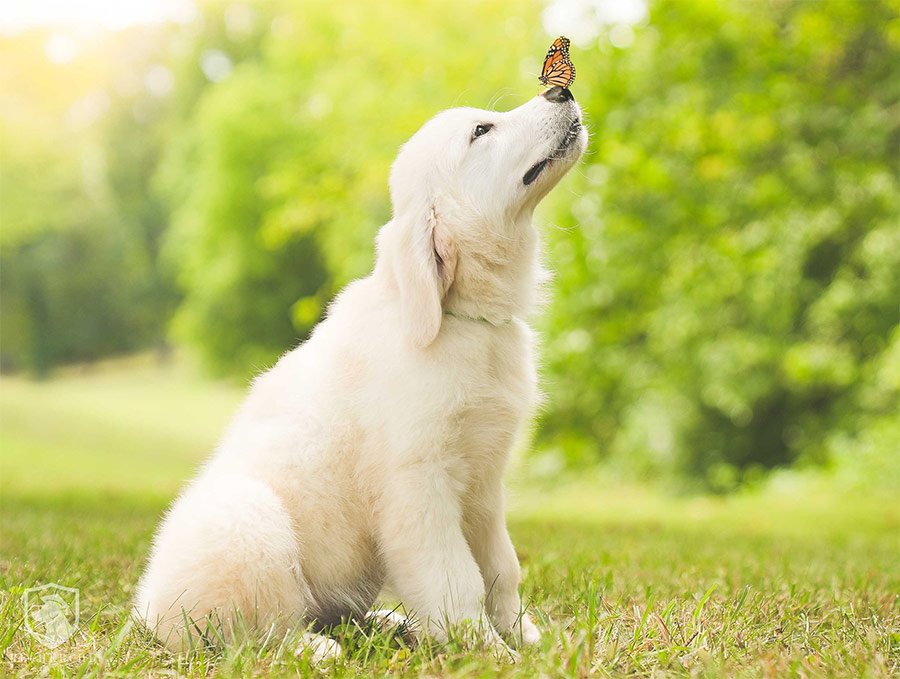White Golden Retrievers are a beautiful breed of dog that are known for their friendly and outgoing personalities. However, like all dogs, they can experience separation anxiety when left alone. Separation anxiety is a common problem in dogs and can be caused by a variety of factors, including genetics, lack of socialization, and past experiences.
Understanding the signs of separation anxiety in white Golden Retrievers is the first step in managing the condition. Some common signs of separation anxiety include destructive behavior, excessive barking or whining, and pacing. If left untreated, separation anxiety can escalate and become a serious problem for both the dog and their owner.
Fortunately, there are several effective treatments and management strategies for dealing with separation anxiety in white Golden Retrievers. These can include gradual desensitization, medication, and providing plenty of mental and physical stimulation. With patience and consistency, it is possible to help your white Golden Retriever overcome their separation anxiety and live a happy, healthy life.
Key Takeaways
- Separation anxiety is a common problem in white Golden Retrievers and can be caused by a variety of factors.
- Understanding the signs of separation anxiety is the first step in managing the condition.
- Effective treatments and management strategies include gradual desensitization, medication, and providing plenty of mental and physical stimulation.
Understanding Separation Anxiety in White Golden Retrievers

Separation anxiety is a common problem among dogs, including White Golden Retrievers. It is a condition where dogs become anxious when left alone or separated from their owners. This can rapidly intensify and can take a destructive nature if left unattended. Therefore, it is important to understand the needs of your White Golden Retriever and take steps to alleviate their anxiety.
Symptoms of Separation Anxiety
The symptoms of separation anxiety in White Golden Retrievers can vary from dog to dog. However, some common symptoms include:
- Chewing up or destroying things
- Drooling, panting, and pacing
- Breaking through doors or scratching at surfaces or the sides of their crate
- Escaping bedrooms, backyards, or other spaces
- Pacing obsessively

Many dogs that display separation anxiety behaviors don’t always demonstrate these behaviors immediately. At first, they may start out being all right, at least part of the time, while their owner goes away. However, as the condition worsens, they may become more anxious and potentially destructive to their home and other surroundings.
Causes of Separation Anxiety
There are several causes of separation anxiety in White Golden Retrievers. Some of the most common causes include:
- Lack of socialization and training
- Genetics
- Trauma or abuse
- Change in routine or environment
- Neglect or abandonment
It is important to identify the cause of your dog’s separation anxiety so that you can take the appropriate steps to alleviate their anxiety. This may involve working with a professional dog trainer or behaviorist, providing your dog with more exercise and mental stimulation, or making changes to their environment or routine.
In summary, separation anxiety is a common condition among White Golden Retrievers. By understanding the symptoms and causes of this condition, you can take steps to alleviate your dog’s anxiety and improve their overall well-being.
Treatment and Management of Separation Anxiety

Dealing with separation anxiety in white golden retrievers requires a combination of behavioral training techniques and medical treatments. Here are some effective ways to manage and treat separation anxiety in white golden retrievers:
Behavioral Training Techniques
- Gradual Desensitization: Gradually exposing your White Golden Retriever to situations that trigger anxiety can help reduce their fear. Start by leaving them alone for short periods and gradually increase the duration over time.
- Crate Training: Crate training can help your white golden retriever feel safe and secure when you are not around. Make sure the crate is comfortable, and provide them with toys and treats to keep them occupied.
- Positive Reinforcement: Rewarding your white golden retriever for calm behavior when you leave and return home can help reinforce positive behavior. Use treats, toys, or verbal praise to reward them.
- Exercise: Regular exercise can help reduce anxiety in white golden retrievers. Take them for a walk or play with them before leaving to help them relax.
Medical Treatments
- Medications: Anti-anxiety medications can help reduce anxiety in white golden retrievers. Consult with a veterinarian to determine the appropriate medication and dosage for your dog.
- Natural Remedies: Some natural remedies, such as CBD oil or lavender oil, can help reduce anxiety in white golden retrievers. However, consult with a veterinarian before using any natural remedies.
- Calming Products: Calming products, such as pheromone sprays or calming collars, can help reduce anxiety in white golden retrievers. These products release pheromones that help your dog feel calm and relaxed.
In conclusion, managing and treating separation anxiety in white golden retrievers requires a combination of behavioral training techniques and medical treatments. Consult with a veterinarian to determine the appropriate treatment plan for your dog.
Preventing Separation Anxiety In Dogs
Separation anxiety is a common issue in White Golden Retrievers, but there are steps that can be taken to prevent it from developing.
Establishing Routines
Establishing a routine can help your White Golden Retriever feel more secure and less anxious when left alone. A consistent routine can also help your dog understand when it’s time to play, eat, and sleep. This can help to reduce anxiety and stress, as your dog will know what to expect.
Here are some tips for establishing a routine:
- Set a consistent feeding schedule and stick to it.
- Establish a regular exercise routine.
- Create a comfortable and safe space for your dog to rest.
- Make sure your dog has plenty of toys to play with when you’re not home.
Building Confidence
Building your White Golden Retriever’s confidence can also help to prevent separation anxiety. A confident dog is less likely to become anxious when left alone, as they know they can handle being on their own.
Here are some ways to build your dog’s confidence:
- Socialize your dog from a young age. This will help them feel comfortable around new people and in new environments.
- Train your dog using positive reinforcement. This will help them learn new skills and feel more confident in their abilities.
- Provide your dog with plenty of mental and physical stimulation. This can include puzzle toys, agility training, and obedience training.
- Give your dog plenty of love and attention. This will help them feel secure and loved, which can help to reduce anxiety.
By establishing routines and building your White Golden Retriever’s confidence, you can help to prevent separation anxiety from developing. Remember to be patient and consistent, and seek professional help if necessary.
Frequently Asked Questions
There are several ways to help your White Golden Retriever deal with separation anxiety. Firstly, you can desensitize your dog to your absence by leaving them alone for short periods of time and gradually increasing the duration. Additionally, providing your dog with interactive toys or puzzles can help keep them occupied and distract them from your absence. Creating a safe and comfortable space for your dog, such as a crate or a designated room, can also help alleviate their anxiety.
Training your White Golden Retriever to be alone can take time and patience. One effective method is to gradually increase the time your dog spends alone, starting with just a few minutes and working up to longer periods. You can also use positive reinforcement techniques, such as giving your dog treats or praise when they remain calm during your absence. It is important to avoid punishment or scolding, as this can worsen your dog’s anxiety.
There are medications available that can help alleviate the symptoms of separation anxiety in dogs, but they should only be used under the guidance of a veterinarian. These medications can include anti-anxiety drugs, such as fluoxetine or clomipramine, or sedatives, such as diazepam. It is important to note that medication should not be the sole treatment for separation anxiety and should be used in conjunction with behavior modification techniques.
The time it takes to see improvement in a dog with separation anxiety can vary depending on the severity of their condition and the effectiveness of the treatment plan. It is important to be patient and consistent with behavior modification techniques, as it can take several weeks or even months for your dog to show improvement.
Some common signs of separation anxiety in dogs include persistent barking or howling, destructive behavior, urinating or defecating in the house, pacing or restlessness, and attempting to escape. If your White Golden Retriever displays any of these behaviors when you are away, they may be experiencing separation anxiety.
While it may not be possible to prevent separation anxiety in White Golden Retrievers completely, there are steps you can take to minimize the risk. Socializing your dog from a young age, providing them with plenty of exercise and mental stimulation, and gradually acclimating them to being alone can all help reduce the likelihood of separation anxiety developing.

